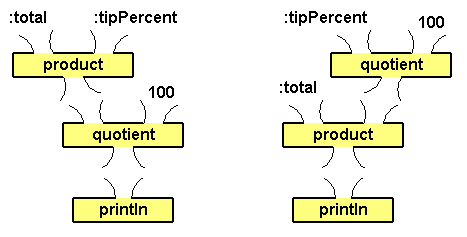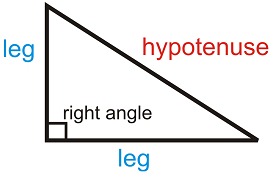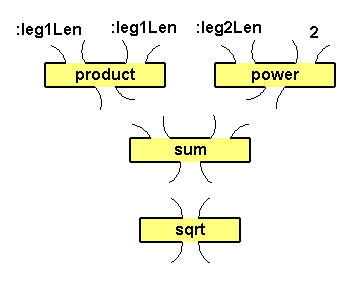BFOIT - Introduction to Computer Programming
Background
jLogo Programming
Java
Appendices
Updates
Lastly
Practice Answers: Expressions and Plumbing Diagrams
-
Draw a plumbing diagram for a tip calculator which takes two
numbers as inputs: the bill's total cost and the percentage of the
tip. The output of the expression (the amount of the tip) should
be input to a println command box.
Then write the procedure tipCalc which prints the tip amount...
to tipCalc :total :tipPercent
println quotient (product :total :tipPercent) 100
end
|
Here are some sample computations and some inputs without the tip percent
left for you to check your program with.
| Bill Total |
Tip % |
Tip $ |
| $10 |
15 |
1.50 |
| $15 |
20 |
3.00 |
| $32 |
16 |
5.12 |
| $22 |
18 |
3.96 |
| $47 |
17 |
7.99 |
-
The average of a bunch of numbers is the sum of the numbers divided by
the number of numbers.
Draw a plumbing diagram for the expression which averages four numbers.
And like the similar plumbing diagram solutions above, you can switch around
the inputs to the sum boxes.
Write procedures to print the average of the numbers:
(a) 66, 10, 47 (Average: 41)
(b) 22, 87, 15, 41 (Average: 42)
(c) 83, 31, 72, 19, 6 (Average: 43)
to avg3num :num1 :num2 :num3
println quotient (sum (sum :num1 :num2) :num3) 3
end
to avg4num :num1 :num2 :num3 :num4
println quotient (sum (sum (sum :num1 :num2) :num3) :num4) 4
end
to avg5num :num1 :num2 :num3 :num4 :num5
println quotient (sum (sum (sum (sum :num1 :num2) :num3) :num4) :num5) 5
end
|
-
Given Pythagoras'
Theorem (the length of the hypotenuse of a right triangle is equal
to the square root of the sum of the squares of each of its legs' lengths),
Draw a plumbing diagram for this expression.
Other correct plumbing diagrams may have two product boxes at the
top, or two power boxes at the top, or the product and
power boxes may be swapped with appropriate input changes.
Then write a procedure which prints the length of the hypotenuse of a
right triangle, given the lengths of its legs.
to hypotenuseLength :leg1Len :leg2Len
println sqrt sum (product :leg1Len :leg1Len) (power :leg2Len 2)
end
|
-
Write procedures which display the surface area and the volume of
a sphere, given its radius. Here are the formulas you need.

to sphereSurfaceArea :radius
println product 4 (product 3.14159 (product :radius :radius))
end
or
to sphereSurfaceArea :radius
println product 4 (product 3.14159 (power :radius 2))
end
and
to sphereVolume :radius
println product (quotient 4 3) (product 3.14159 (product :radius (product :radius :radius)))
end
or
to sphereVolume :radius
println product (quotient 4 3) (product 3.14159 (power :radius 3))
end
Fill in the empty cells with the values your procedures print rounded to thousandths.
Unit
Amount |
Surface Area
(Unit2) |
Volume
(Unit3) |
| 1 |
12.566 |
4.189 |
| 2 |
50.265 |
33.510 |
| 3 |
113.097 |
113.097 |
| 4 |
201.062 |
268.083 |
|
Note: There are calculators on the net that compute the surface area and volume of a
sphere.
Here is one I played with. One thing to be aware of is rounding. In order for
me to get the Logo procedure output to match the calculator I had to use 3.14159265359 for
pi (instead of just 3.14159).




